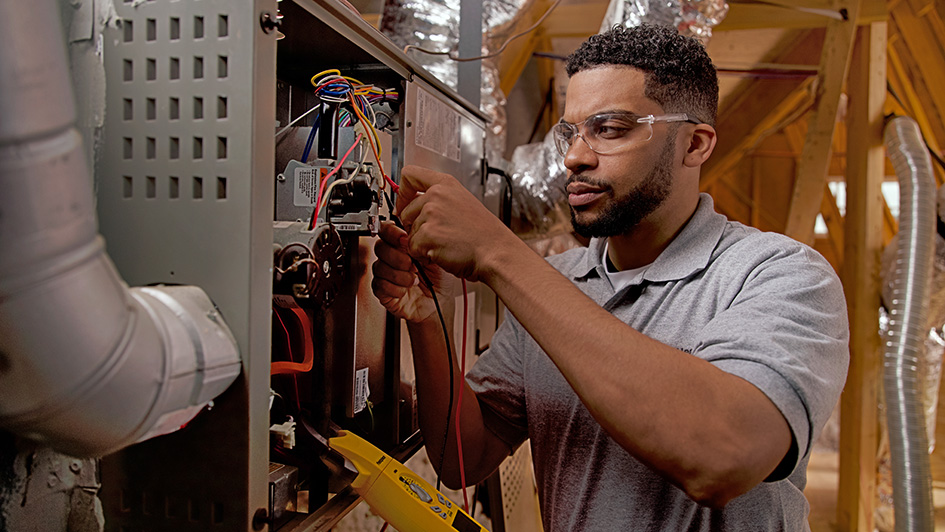
A furnace is often a background player at home, ensuring you're warm in the cold winter months. It frequently won't be noticed until something goes wrong.
One cause may be that your furnace has a cracked heat exchanger. It can be a safety risk, so it’s worthwhile to familiarize yourself with the evidence of a cracked heat exchanger and what you should do if you suspect that might be the problem.
What Is a Heat Exchanger in a Furnace?
A heat exchanger transfers heat from the combustion chamber of your furnace to the air that circulates throughout the air ducts. It usually does this via coils or tubes that heat up the air while serving as a barrier to keep byproducts created in the combustion chamber, called flue gasses, from getting out into your home.
Is a Cracked Heat Exchanger Dangerous?
Thanks to its central role, it isn't surprising that a broken heat exchanger can pose a risk. A damaged heat exchanger can enable dangerous gasses – such as carbon monoxide, which can be lethal – to circulate through your home.
For that reason, do NOT run your furnace if you suspect you're dealing with a cracked heat exchanger, as letting it run could make your entire family sick. Call an HVAC professional immediately if you believe your furnace has a cracked heat exchanger that needs to be repaired.
Four Symptoms of a Cracked Heat Exchanger:
- Furnace shuts off: A cracked heat exchanger may cause your furnace to shut off.
- Odd Smells: If the air coming out of your furnace has an intense chemical odor, it may be an indicator that gasses are seeping through cracks in your heat exchanger. These byproducts, which will often smell like formaldehyde, are a significant warning sign.
- Carbon monoxide alarm is triggered or you recognize poisoning symptoms: If a cracked heat exchanger is releasing carbon monoxide in your home, your carbon monoxide alarm should go off or household members might experience signs of carbon monoxide poisoning. Side effects include headaches, dizziness, weakness, nausea, vomiting or feeling sleepy. If an alarm goes off or you feel sick, leave the home immediately and then call for help.
- Soot: If you notice black sooty accumulating on the exterior of your furnace, it’s another sign something might be seriously wrong.
What You Should Do if a Furnace Heat Exchanger is Cracked
If you worry your furnace has a cracked heat exchanger, contact a pro well versed in furnace installation Hasbrouck Heights right away so they can inspect your system and, if required, handle a furnace heat exchanger replacement. Costs often differ depending on the situation, but estimates often hover around $1,000 to $3,000.
Fortunately, the good news is that heat exchangers are often covered by the warranty. You’ll want to check the warranty paperwork on your furnace, because while the warranty might not cover the entire cost of repairs, it can significantly shrink your bill.
How to Avoid a Cracked Heat Exchanger in Your Home
One of the easiest ways to prevent a problem in your furnace overall is through regular furnace maintenance. Furnaces work the best when they operate efficiently. Contacting a skilled professional to examine your furnace for worn-out parts, dirty filters and other potential problems can help you avoid getting a big bill later on.
It’s also helpful to review your furnace filters every few months – it’s recommended some filters be changed every 90 days or sooner if they are dirty or grimy. While the filters aren't a part of the heat exchanger itself, the strain of dragging air through a clogged filter makes your entire furnace work harder to accomplish its job. And the harder your furnace has to work, the more deterioration parts like the heat exchanger will endure.
